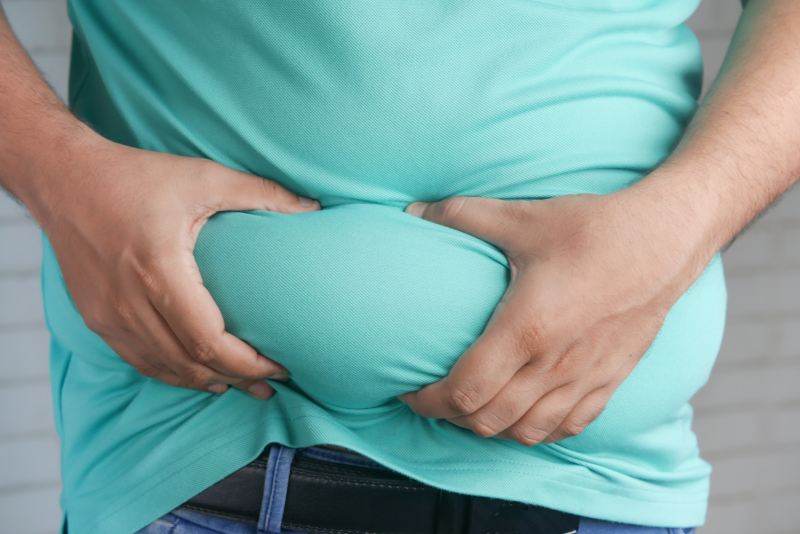While we often focus on the number on the scale, it is really our body fat percentage that tells us just how healthy and fit we are. As a trainer, I have many clients come to me concerned about their BMI. I have to shift their focus, as measurements like BMI that only account for height and weight ignore factors like muscle mass.
Whether you are simply curious about your body fat percentage or you are looking to reduce it, keep reading to learn the most accurate methods for how to calculate body fat percentage!
What is body fat percentage?

Body fat percentage refers to the proportion of fat in your body compared to your total body weight. It includes both essential fat, which is necessary for basic bodily functions, and stored fat, which provides energy reserves. Essential fat is critical for organ protection, hormone regulation, and overall health, while the amount of stored fat someone has can vary based on lifestyle and diet.
Measuring body fat percentage offers a better understanding of body composition than weight alone, helping to assess fitness levels and health risks.
What does your body fat percentage tell you?

Body fat percentage reveals how much of your body weight consists of fat compared to lean mass, such as muscles, bones, and organs. It’s a valuable indicator of overall health and fitness, and it tells you more about yourself than just weight or body mass index (BMI).
A healthy body fat percentage depends on factors like age, sex, and activity level. Higher percentages may indicate excess fat, which is linked to health risks like heart disease and diabetes. Lower percentages, if too extreme, can affect hormonal balance and overall well-being. In fact, a collection of seven studies concluded that “fat mass and fat-free mass show opposing associations with mortality. Excess fat mass is related to increased mortality risk, whereas fat-free mass protects against risk of mortality.”
How to calculate body fat

1. DEXA scan
A DEXA scan is one of the most accurate methods for calculating body fat. It uses X-rays to measure body composition, including fat, lean muscle, and bone density, and it provides a detailed breakdown of fat distribution. Unfortunately, it isn’t the most accessible because it requires access to specialized equipment and can be costly.
2. Hydrostatic weighing
Hydrostatic weighing, also known as underwater weighing, determines body fat by measuring body density. It compares a person’s weight on land to their weight underwater. The denser the body, the lower the fat percentage. While accurate, this method is time-consuming and requires access to a specialized facility.
3. Air displacement plethysmography (bod pod)
The Bod Pod uses air displacement to measure body volume and density, estimating body fat percentage. It’s a non-invasive and reliable method but may not be as widely available as other options.
4. Skinfold calipers
One of the best ways to measure body fat percentage from home is with skinfold calipers. This method involves measuring skinfold thickness at specific body sites using calipers. These measurements are used in formulas, such as the Jackson-Pollock method, to estimate body fat. Accuracy depends on the skill of the person performing the test.
5. Bioelectrical impedance analysis
BIA devices send electrical currents through the body to measure resistance, estimating fat, muscle, and water content. While convenient and affordable, accuracy can vary based on hydration levels and device quality.
What is the ideal body fat percentage for men?

The ideal body fat percentage for men varies by age and fitness level. For most adult men, a healthy range is 10–20%. Athletes typically have lower body fat, ranging from 6–13%, due to higher muscle mass and optimized body composition for performance. Men aiming for general fitness may fall within 14–17%, while those with percentages above 20% are at greater risk of developing health issues like heart disease and diabetes. Age also impacts ideal ranges, as older men naturally have higher body fat.
Tips for reducing body fat

To reduce body fat, being consistent with a healthy lifestyle is essential. Consider practicing the following healthy habits to see results:
- Maintain a calorie deficit by consuming fewer calories than you burn.
- Focus on a balanced diet rich in lean protein, whole grains, vegetables, and healthy fats to support fat loss and preserve muscle.
- Combine strength training and cardio to maximize calorie burn and improve body composition.
- Stay consistent with hydration, as water supports metabolism and reduces cravings.
- Avoid excessive processed foods, added sugars, and alcohol, which can hinder progress.
- Track your progress through measurements and pictures.
- Prioritize sleep and stress management, as both influence hormones that regulate appetite and fat storage.
Frequently asked questions

What is the formula for calculating body fat?
There is no universal formula for calculating body fat, but common methods include the U.S. Navy formula and the Jackson-Pollock method. The Navy formula uses waist, neck, and height measurements for men and hips, waist, neck, and height for women. Skinfold calipers measure subcutaneous fat for Jackson-Pollock calculations.
How do you estimate total body fat?
Total body fat can be estimated using methods like skinfold calipers, bioelectrical impedance, or body circumference measurements. More advanced techniques include DEXA scans, hydrostatic weighing, or air displacement plethysmography. These methods calculate body fat percentage by assessing subcutaneous fat, body density, or electrical resistance, providing an estimate of overall fat levels.
What body fat calculator is most accurate?
The most accurate body fat calculators are DEXA scans and hydrostatic weighing, as they provide precise measurements of body composition, including fat, muscle, and bone mass. While convenient, tools like bioelectrical impedance or circumference-based calculators are less accurate due to variability in hydration, body type, and measurement techniques.




